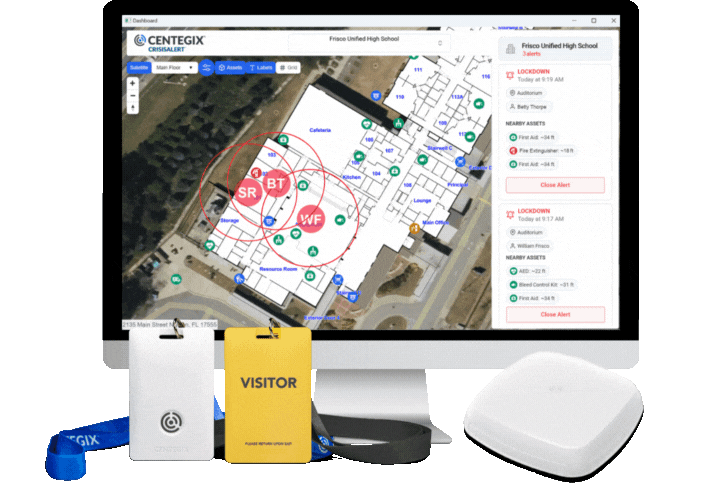When there is a threatening incident in a school, time saves lives. Florida has recently taken an important step to accelerate responses and protect children and educators with Alyssa’s Law, named in memory of Alyssa Alhadeff, a young victim of the Marjory Stoneman Douglas High School shooting in Parkland.
The bill requires every Florida public school to install a mobile panic alert system, which will enable staff members to initiate an alert that is delivered to first responder agencies.
These panic alert systems promise to enhance classroom safety, but they don’t all work the same way. School districts should consider what ensures the greatest response and protection and examine security systems with the following criteria:
Accurately pinpoints the location of the incident.
Think of all the halls, floors, rooms, buildings, and outdoor areas on a school campus. During a threatening incident, authorities need to know exactly where to go. Look for systems and technologies that can identify the precise location for immediate response. Cellular GPS is inaccurate inside a building and is not able to distinguish between floors in a multi-floor building.
Empowers everyone to alert authorities of a threat wherever it emerges, whether it’s the classroom, the playground, the parking lot, or the stadium.
Of 1,292 shooting incidents on a school campus, only 46 percent occurred inside a school building, according to The Center for Homeland Defense and Security. Ideally the panic button travels with the staff member at all times and is not mounted in a fixed place in the classroom. The solution should be available to everyone, compared to the selective deployment of radios, static panic buttons.
Makes use fast and easy.
An alert system should require very few steps for any staff member to launch an alert. Clicking a button on a body-worn device is simpler and faster than retrieving a phone from a drawer or pocket, turning it on, authenticating, and launching an app. Any trained police officer will tell you that in a crisis you can’t rely on fine motor skills. When your fight or flight response kicks in, the average person needs to rely on gross motor skills, not complex, multi-step processes. Those seconds are precious when a threat unfolds.
Communicates clearly to the entire school community to ensure specific, appropriate action.
An effective emergency notification solution must reach everyone involved in a threat—audibly and visually. For example, interior and exterior strobe lights can alert people on playgrounds or parents arriving to campus that a threatening incident is under way. Also, alert solutions should integrate with school intercom systems and have the capability of pushing notifications to desktop computers throughout the school. It’s imperative to maximize awareness and information so every person is appropriately alerted.
Ensures systems are always powered and connected.
The law allows for systems using mobile apps as the alert mechanism. This can introduce safety gaps. Does the school’s WIFI network cover outdoor areas, locker rooms, and bathrooms? Does everyone have their charged phone or device with them at all times? Availability and reliability are critical. Further, who pays for the expensive mobile devices and monthly service fees if apps are required to be deployed on staff phones?
Nothing is more important than keeping our children safe in schools. School districts should do a thorough investigation and assessment of panic button solutions. This is too important to simply “check the box” to comply with Alyssa’s Law. Ask the right questions to ensure your panic alarm system is fast, ready, and available anytime, anywhere in or outside of the school building. Ensure that students, parents, teachers, and emergency responders get informed quickly and reliably during a threatening situation. It’s the right approach to school safety and reassurance for our kids, educators, families, and communities.
KEEP READING
Federal Funding Enhances School Safety Now and into the Future
The federal government is hard at work ensuring Americans receive financial assistance for hardships endured during the pandemic. One key goal of The Coronavirus Aid…
Read more >
7 Ways to Maintain a Safe School Community
“We have to do everything we can to have safe schools and protect our students,” is a phrase Mike Johnson, Managing Director at ClearpathEPM, not only repeats but constantly works toward each day. After nearly 30 years as a federal law enforcement agent, Johnson now…
Read more >
Panic Button Compliance: Don’t Leave Your Staff Vulnerable
The safety and security of hotel workers have been put in the national spotlight recently with the publication of alarming studies highlighting the disproportionate amount of on-the-job incidents of sexual harassment and assault faced by hospitality workers…
Read more >









